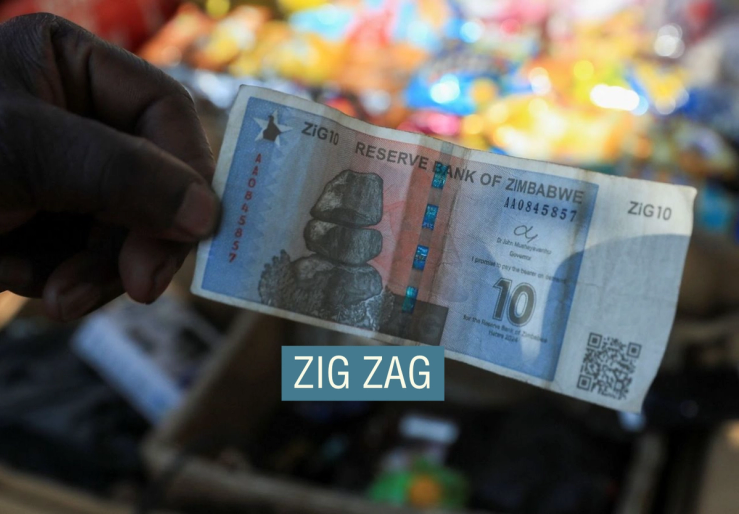The News
Zimbabwe is renewing efforts to ditch the US dollar as the dominant form of tender in the southern African nation by leaning on government officials to de-dollarize the economy by 2030.
The timeline of the new push aligns with an unprecedented extension of President Emmerson Mnangagwa’s mandate, who is now set to stay in office for an additional two years past his original 2028 exit date. It comes after an approval by the ruling party earlier this month.
Zimbabwe’s economy has mostly run on the US dollar since 2009 and the government wants to return to a local currency so the central bank can gain full control of currency supply. Among other things it would allow the administration to pay contractors working on politically-favorable infrastructure development projects such as road construction with the local currency, Zimbabwe Gold (ZiG).
Harare also argues the ZiG, which was first introduced in April 2024, will improve the competitiveness of local manufacturing companies through cheaper production processes as opposed to US dollar-based costs. Ultimately the government hopes that local currency use will slow inflation.
However, Nathan Hayes, Zimbabwe analyst at Economist Intelligence Unit said US dollars will “likely remain dominant.” He told Semafor that with inflation in ZiG terms around 90% year on year versus much lower inflation in US dollars, it would be prudent for the de-dollarization process to be rolled out gradually.
In this article:
Know More
Since 2009 Zimbabwe has tried five other local units of exchange and failed to end dollarization of the economy. Even though all businesses are legally mandated to accept the ZiG it is still often shunned for transactions by locals.
The International Monetary Fund estimated economic growth in Zimbabwe is recovering following a sharp slowdown in 2024. Boosted by better climate conditions and high gold prices, Zimbabwe is now projected to notch up a 6% economic growth for 2025.
Wojciech Maliszewski, the IMF’s chief of mission to Zimbabwe told Semafor this week that moving towards exclusive use of a local currency needs to be backed by implementation of policy reforms, including a commitment by the state to stay away from providing subsidies through the central bank.
“Confidence in the ZiG would need to be built through credible fiscal and monetary policies,” said Maliszewski.
Step Back
Mnangagwa’s push for a two-year extension to his second term of office is opposed by his deputy, Constantino Chiwenga, the former military leader who helped him grab power after a coup that ousted former leader, Robert Mugabe, in 2017. Chiwenga also opposes corruption by government and Zanu PF officials but was overruled at the party’s October conference.
Mnangagwa, 83, is now focused on pushing through constitutional amendments for his extension and for Zimbabwe’s return to a single local currency by 2030.
Meanwhile, in an effort to maintain some value for the ZiG, the central bank has tightened money supply. Analysts at BMI said this month that the Reserve Bank of Zimbabwe’s monetary “tightening measures, along with a surge in gold exports, have helped to keep the ZiG stable” over the past year although its use is still restricted. Analysis of financial statements of publicly listed companies in Zimbabwe shows 80% of corporate purchases are made in US dollars.
Room for Disagreement
Zimbabwean economist and former opposition parliamentarian, Eddie Cross, said the resolution to extend Mnangagwa’s rule had dented economic confidence. However, said the de-dollarization agenda was a separate policy reform effort. “I don’t think there is any link between the two but I am certain that the outcome of the Zanu PF conference was extremely damaging for any economic policy reform agenda. It raised concerns over political stability which affects investor confidence in policy reforms,” he said in an interview on Saturday.
Notable
- Zimbabwe’s de-dollarization roadmap needs clarification, says an editorial in Zimbabwe’s The Standard.


